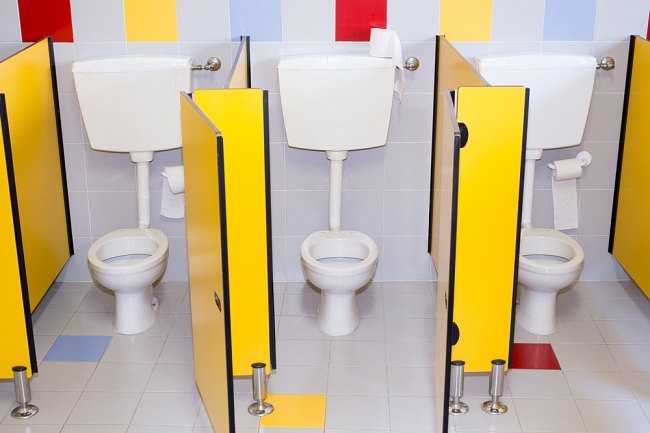Want to Know the Body's Health Conditions? Try checking your faeces
All substances that the body does not need will be excreted when urinating or defecating, in the form of urine and feces or feces. Through observation of feces, you can get an overview of the health condition of the body, especially the digestive tract.
To find out if the body has a problem, one way is to check the color and texture of feces. Stool examination can be done in a hospital or laboratory to find out if there is a disturbance in your digestive tract.

Color Stool With Meanings
Before being issued in the form of feces, the food you consume will go through the digestive process first. The length of this process varies from person to person, but normally is two to three days. Likewise the frequency of disposal of the remaining substances. Some people defecate once a day to three times a day. Generally, healthy feces are brown and shaped like sausages, with a soft or dense texture. In addition, feces should also be easy to remove and not so runny.
If your stool has a different color, it might indicate a disturbance in your body. The following is a color explanation on the faeces along with their meaning:
- Green color
Green stool can actually be said to be normal. This condition occurs because you consume too much vegetables, foods and drinks with green coloring, or iron supplements. In addition, green stool can also be a sign that you have diarrhea. This is caused by food that is too quickly distributed to the large intestine. So, bile doesn't have time to digest it perfectly.
- Color k uning
Besides being tanned , the yellow color in the stool is normal. Brownish or yellow color in the stool is said to be normal because of the presence of bilirubin which is produced by the liver, and released through feces. Bacteria and digestive enzymes in the intestine also play a role in the appearance of yellow. Yellow stools that look oily and foul smelling can be caused by digestive disorders, such as celiac disease. This condition makes the stool have excess fat. The trigger is high gluten foods, such as bread and cereals.
- White color If the stool is white and looks pale like clay, it could be a sign that you have liver problems or a blockage in the bile duct. In addition, the use of bismuth subsalicylic diarrhea in high doses can also make white stools.
- Bright red color The red color of the stool can be caused by many factors, such as bleeding in the lower digestive tract, eating too much tomatoes or foods that contain red color, and hemorrhoids. Colon cancer can also cause feces to be bright red or blackish. If the red color in the stool does not go away in a few days, it is advisable to see a doctor immediately.
- Black color This condition is caused by the upper digestive tract, such as the stomach or esophagus, bleeding. Another thing that can cause black stool is ulcer or cancer. Even so, black stools can also be a common side effect when you take iron supplements.
Stool Textures and Their Meanings
In addition to observing the color of faeces, you can also find out the condition of the body's health from the texture of feces. Here are some types of faecal texture and their meanings:
- Type 1
Type 1 feces are usually small chunks of solid and separate like peanuts. This type of stool is a sign that you are experiencing constipation. - Type 2
The form of the stool looks like a longer and denser sausage. This indicates that you are experiencing mild constipation. - Type 3
The shape of the stool looks like a sausage and there are cracks in surface. This form of stool is considered normal and shows a healthy body condition. - Type 4
The appearance of stool is like a sausage but is softer and more contagious. This type of stool also indicates that the body is in good health. - Type 5
The shape of the stool is like a soft lump with clear edges. This indicates that your body lacks fiber intake. - Type 6
This type of faeces has a soft and irregular shape. This indicates that you have mild diarrhea. - Type 7
The appearance of faeces tends to be liquid without solid pieces. This means that you have severe diarrhea.
Changes in faecal texture from those that were initially normal to liquid or too hard and did not improve after a few days are conditions that need to be watched. Likewise with stool color changes from what was originally brown or yellow to white, black, or fresh red (bloody defecation) is a medical condition that needs immediate medical examination and treatment by a doctor.
In addition to observing color and faecal texture, you can also find out the health condition of the body through faecal analysis in the laboratory if a doctor recommends it. This test can identify whether you have disease in the digestive tract and see if there are parasites, bacteria, or fungi in the digestive tract.
To keep your feces out under normal conditions, consume more fibrous foods and liquids. In addition, regular exercise can improve the movement of the digestive tract, so you avoid constipation.